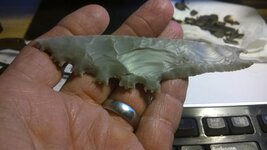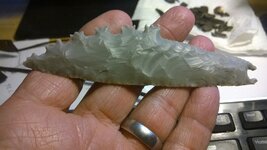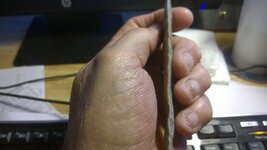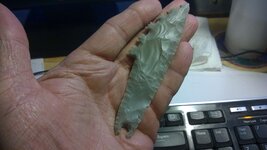monsterrack
Silver Member
- Apr 15, 2013
- 4,419
- 5,815
- Detector(s) used
- Garrett, and Whites
- Primary Interest:
- All Treasure Hunting
1st READ ALL THE RULES
#1 To enter this give away you must have made a post or a comment on a post on the N.A. artifact site in the last 30 days.
#2 Mods. can play on this give away for just being a mod.(they do a lot of hard work for us)
#3 Pick a number between 1 and 500 and put the date of your last post or comment.
#4 You can only have 1 pick of a number and if someone picks the same number the 1st one that picked that number gets the number. So check on the post for the numbers already picked.
#5 This will end on 3/18/17 at 7pm central time.
#6 I will use a random number generator to pick the winning number(that is the only fair way) and take a screen shot of it and post it on the night that this ends. Who ever gets the closest to the number with out going over that number will win.
What is up to win is an original monsterrack eccentric stone blade and believe me they don't just fall out of trees. I will pay the shipping USPS priority mail. This is a one of a kind and who knows it may one day be a collectable. Under stand this IT IS A REPRODUCTION. Hope you enjoy and good luck to all.!!!!!!!!



#1 To enter this give away you must have made a post or a comment on a post on the N.A. artifact site in the last 30 days.
#2 Mods. can play on this give away for just being a mod.(they do a lot of hard work for us)
#3 Pick a number between 1 and 500 and put the date of your last post or comment.
#4 You can only have 1 pick of a number and if someone picks the same number the 1st one that picked that number gets the number. So check on the post for the numbers already picked.
#5 This will end on 3/18/17 at 7pm central time.
#6 I will use a random number generator to pick the winning number(that is the only fair way) and take a screen shot of it and post it on the night that this ends. Who ever gets the closest to the number with out going over that number will win.
What is up to win is an original monsterrack eccentric stone blade and believe me they don't just fall out of trees. I will pay the shipping USPS priority mail. This is a one of a kind and who knows it may one day be a collectable. Under stand this IT IS A REPRODUCTION. Hope you enjoy and good luck to all.!!!!!!!!




Upvote
0






